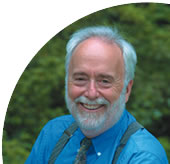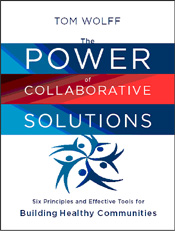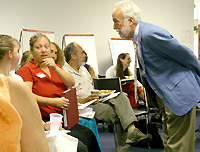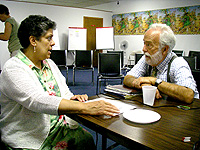Doing Democratic Governance Right February 24, 2011
Posted by tomwolff in : Uncategorized , add a commentThis came across my desk from my good friend and colleague Bill Berkowitz and it is well worth checking out:
We find lots of helpful news in our inbox, but here’s one item that stands out. It’s a report titled “Beyond Civility: From Public Engagement to Problem Solving,” released just last month by the National League of Cities. Designed as “an action guide for city leaders,” it’s short (12 pages), research-based, and to the point.
The report offers seven principles for “doing democratic governance right.” More important, it gives multiple specific examples of how other communities are putting these principles into practice. Perhaps you could adapt some of these ideas for your own community.
You can find the report at:
http://www.nlc.org/ASSETS/B5FAD9F7F4B84A2E93D8DB388FA8C700/RI_CivilityGuide2010_FINAL.pdf
The League has published many other reports along the same lines, and you might want to check these out as well while you’re at its main site, www.nlc.org.
The report presents seven principles to help city leaders build a culture of democratic governance in their communities:
MODEL CIVILITY
SHARPEN SKILLS
CREATE OPPORTUNITIES FOR INFORMED ENGAGEMENT
SUPPORT A CULTURE OF COMMUNITY INVOLVEMENT
MAKE THE MOST OF TECHNOLOGY
INCLUDE EVERYBODY
MAKE IT LAST
To add a comment CLICK HERE
Add a commentCommunity Tool Box Out of the Box Prize Winners Announced February 17, 2011
Posted by tomwolff in : Uncategorized , add a commentRecognizing grass-roots efforts to improve the lives of impoverished, marginalized populations around the globe was the goal of the first Out of the Box competition organized by the University of Kansas Work Group for Community Health and Development. Selected by an international panel of judges and then by public voting, the grand prize and second prize- winning projects are both located in Kenya in communities ravaged by civil unrest and the HIV/AIDS epidemic.
The $5000 grand prize winner is the Uhuru Child organization for its Jikaze Internally Displaced Persons Resettlement Village Project in Maai Mahiu, Central Province, Kenya. The project a sustainable re-settlement village for 900 internally displaced persons following the Kenyan post-election violence in 2008.
The village lacked consistent food and clean water supplies, access to health care, sufficient classrooms and funds for education. Half of the villagers were still living in tents. Within a year the group built 56 houses, planted 145 trees, sold 75 water filters at a subsidy, conducted three months of food relief in conjunction with the dispersal of 90 micro-finance loans and offered 22 educational scholarships to children in the community. As a result, every family has been moved out of tents and into houses, and no one has died of starvation, sickness or accident since the initiative began, according to Joe Heritage, Uhuru Child’s Project Manager. Since the distribution of the water filters, no child has become sick from water-borne diseases. Uhuru Child is an international community support organization that divides its efforts between America and Africa.
Uhuru Child tells their story in a beautiful and compelling video.
The $2,000 second prize winner, Fountain of Hope Youth Initiative, is a community-based social support organization that helps children, especially those affected by HIV/AIDS, have equal opportunity to compete academically and in extracurricular activities.
In 2007, the organization began to supply girls with sanitary pads in Kiambu, Kenya. Community workers discovered that the lack of sanitary pads was often the reason that girls from poor homes were struggling academically or even dropping out of school. The girls were often embarrassed and even ridiculed because of staining their uniforms during menstruation. Fountain of Hope organized donations of sanitary pads from community shops and supermarkets starting by asking for just a single packet of sanitary pads, according to James N. Waruiru, Fountain of Hope’s Project Coordinator. The initiative now supports more than 250 young women.
More than 300 projects in 42 countries – from Argentina to Zimbabwe – applied for the prizes that recognize outstanding community innovation efforts that stress low-cost, small-scale, non-technical solutions to local problems.
According to Stephen B. Fawcett, director of the Work Group for Community Health and Development that sponsors the Community Tool Box, the sheer number of projects submitted to the contest testifies to how much community innovation is underway in the far corners of the world. “The power of communities to take action is a wonderful thing to behold. The competition made it possible for people around the world to share what works and to inspire others to take action.”
For more details, and to view stories of others who are trail-blazing to improve life for people in their communities, we welcome you to visit the new Community Innovators’ page of the Community Tool Box. We hope that you will check back often, as we will be featuring additional stories of inspiration and change throughout the year.
You can add your COMMENTS HERE
Add a commentIs the grassroots community at your partnership table? February 7, 2011
Posted by tomwolff in : Uncategorized , add a commentI was recently leading a webinar for a new Federal initiative. Their focus is on health issues identified by the community as adversely affecting the health of women and girls. In the first phase of funding they were to spend a year doing a community needs assessment.
One major focus of my presentation was the necessity of engaging those most affected by their issues in all aspects of the project, not just the assessment but also program planning, implementation, and evaluation.
We had a lively exchange on this topic – who were those most affected by the issues they were assessing? Were they already at the partnership table? If not how could they get them there? And how could they keep them there? I also asked what actual roles will those most affected play in the partnership. To answer this last question I use a variation of the Arnstein Ladder of Participation that asks us to rate our level of engagement of the grassroots on a continuum from tokenism and decoration (lowest level) to shared decision making (highest level). (See The Power of Collaborative Solutions page 98-99). This made for a fascinating discussion.
These are all good questions to ask for your own work. These particular projects were very engaged in actively addressing these issues and getting the community to the table.
How would you answer these questions for your own community work?
For me it highlighted once again how much we in community health and development espouse the idea of having the grassroots at the table as equal partners and how seldom we actually practice it.
How often do you sit at a partnership /coalition/collaboration table and actually see a decent number of representatives from what we often call the “target population” or those most affected by the issue? (By the way – how would you like to be called a “target population”?)
How often does any one in your community go door-to-door in your neighborhoods and ask the residents what they see as the issues and what they see as the strengths of their community? And how they can work with us to solve the emerging issues? In my experience this is happening less and less. Why is that? How can we function effectively without doing the above?
I am very concerned that we are not talking with those most affected because it means we can’t possibly truly understand their issues, find the appropriate solutions, get community buy-in to the solutions and finally hope for any community sustainability. All these steps are crucial to successful intervention and all REQUIRE having the community at the table with us.
As community organizers and developers we used to actually be on the streets and in the neighborhoods, what happened?
In one of my next blogs I will talk about four possible solutions,
Do you have the grassroots community at the table for your work? How did you make that happen? How can we all bring the community to the table for shared decision making?
To add a comment Click Here






